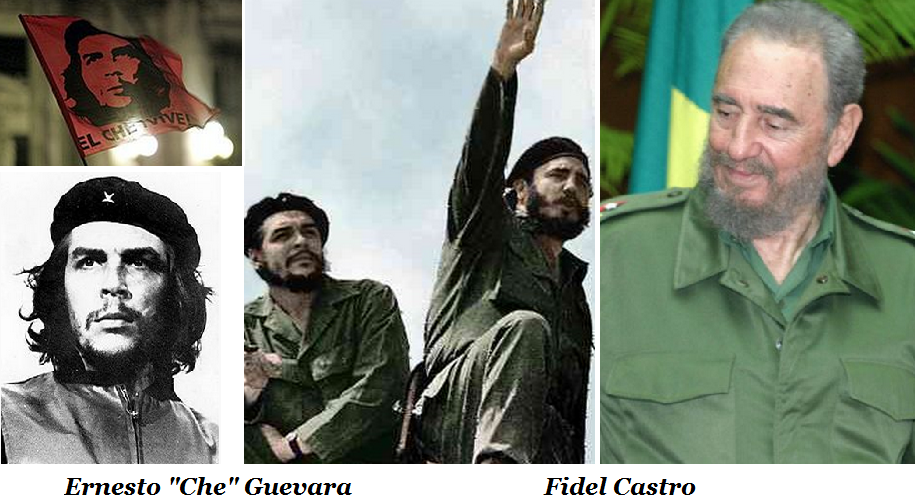En todo el periodo de la subida del socialismo y el comunismo, dos figuras latinoamericanas se destacan entre los otros: Ernesto Guevara y Fidel Castro.
Ernesto Guevara (más conocido por su apodo Che) era un estudiante de medicina de la Argentina, pero dedicó su vida a la causa de revolución cuando vio la pobreza y la enfermedad de la gente latina. A la edad de 24 años él hizo un viaje por toda Latinoamérica en motocicleta, y fue convencido de que la única solución fue una revolución social. Un hombre muy inteligente, Che era un fanático del ajedrez, la poesía, los deportes y la psicología.
Che estuvo en Guatemala cuando el gobierno socialista fue atacado y reemplazado por un dictador anti-comunista. El golpe* fue organizado por el CIA y apoyado por United Fruit Company, una empresa estadounidense. Viendo esto, Che se opuso aún más al imperialismo y al capitalismo, y se hizo aún más radical en sus planes.
Viviendo ahora en México, Che conoció a Fidel Castro y a su hermano Raúl.
Fidel Castro, hijo de un granjero cubano, era un estudiante de derecho en la Universidad de la Habana, donde empezó a ser Marxista y anti-imperialista. En 1953 Castro fue encarcelado porque trató de derrocar al gobierno del dictador Fulgencio Batista. Cuando fue liberado, Castro viajó a México con su hermano y empezó otra organización revolucionaria.
Con la ayuda de Che, los hermanos Castro regresaron a Cuba en 1956. Empezando con menos de 20 hombres, ellos formaron muchos grupos revolucionarios en los campos y en las ciudades. Con tácticas brillantes y brutales, ellos tomaban el país poco a poco, hasta que Batista huyó del país en 1959.
Bajo Fidel Castro, Cuba se hizo un país comunista. Estados Unidos, que había apoyado a Batista, cortó las relaciones económicas y diplomáticas, y Cuba nacionalizó toda la propiedad y todas las empresas estadounidenses. Castro se alió con La Unión Soviética, el gran rival de Estados Unidos. Él hizo cambios buenos en la educación, los derechos civiles y otras áreas importantes. Pero también creó un estado muy represivo y gobernó un país de pobreza tremenda. Fidel Castro gobernó Cuba hasta 2011.
Después de la revolución, Che viajó a otros países para instruir e inspirar a las fuerzas revolucionarias. En 1967 estuvo en Bolivia con el mismo motivo, donde fue capturado y asesinado por tropas bolivianas con el apoyo del CIA.
* This term is short for Golpe de Estado, meaning a hit/blow of the state (a hostile takeover of a country’s government by forces from within the same country).

